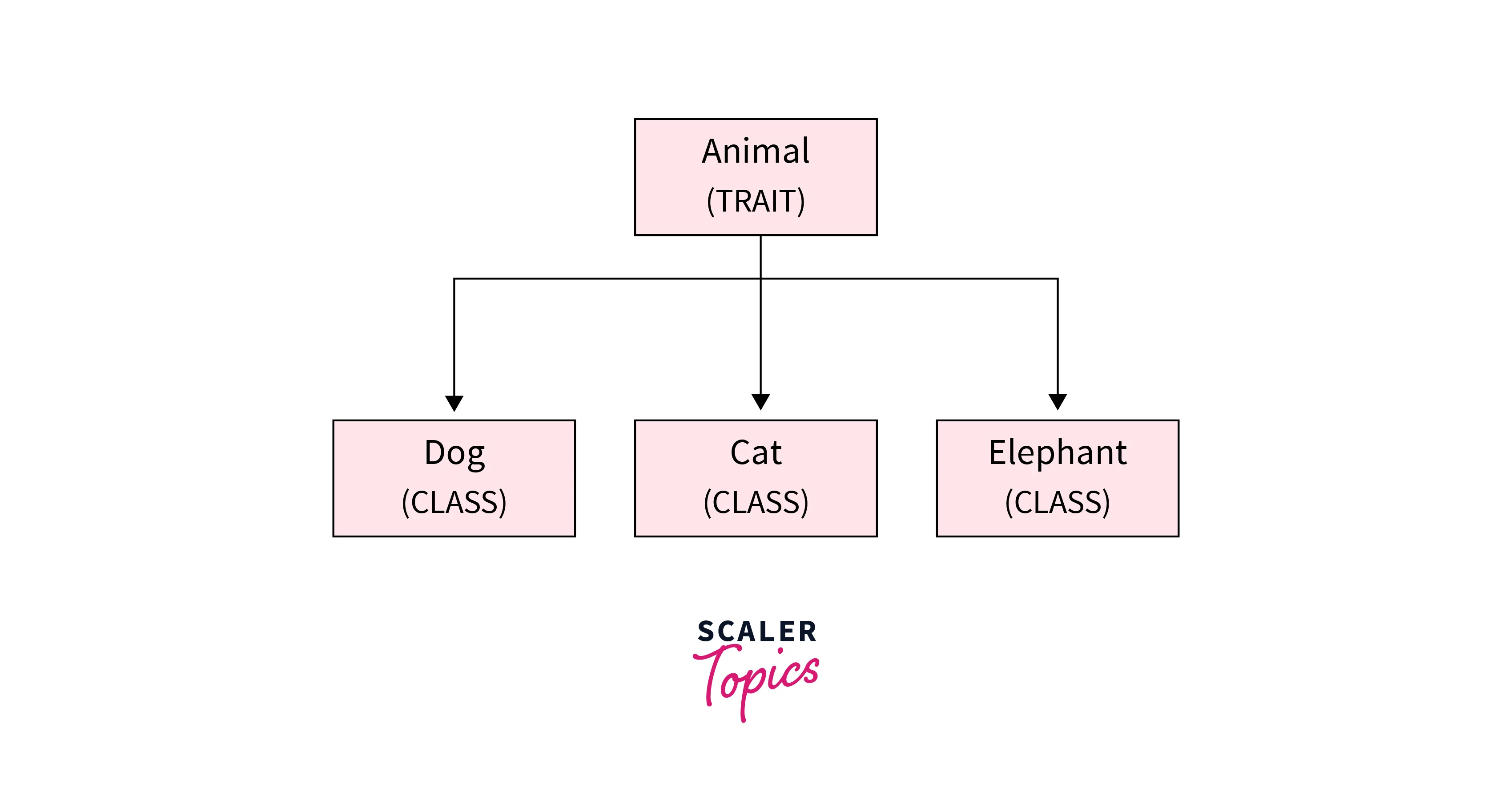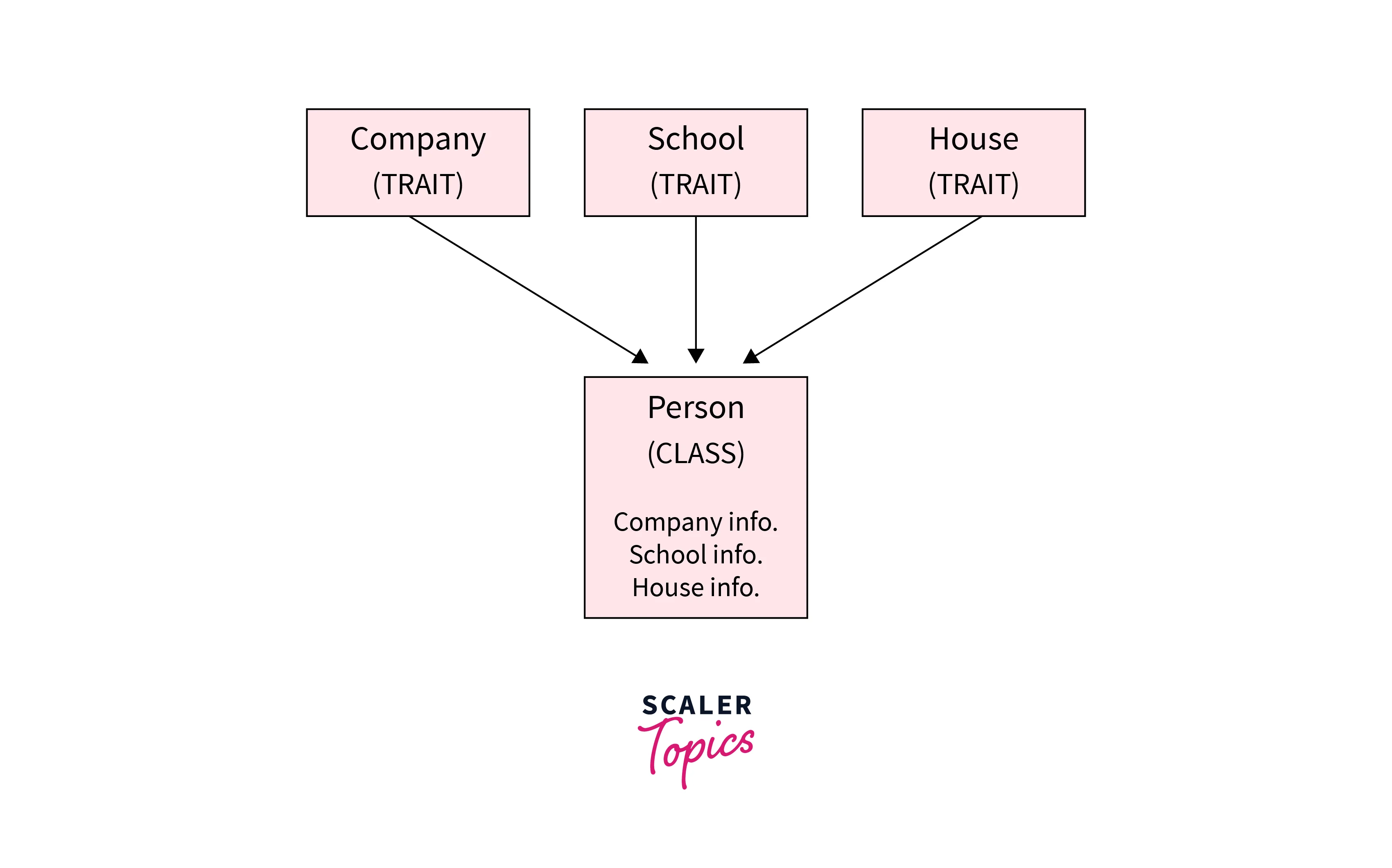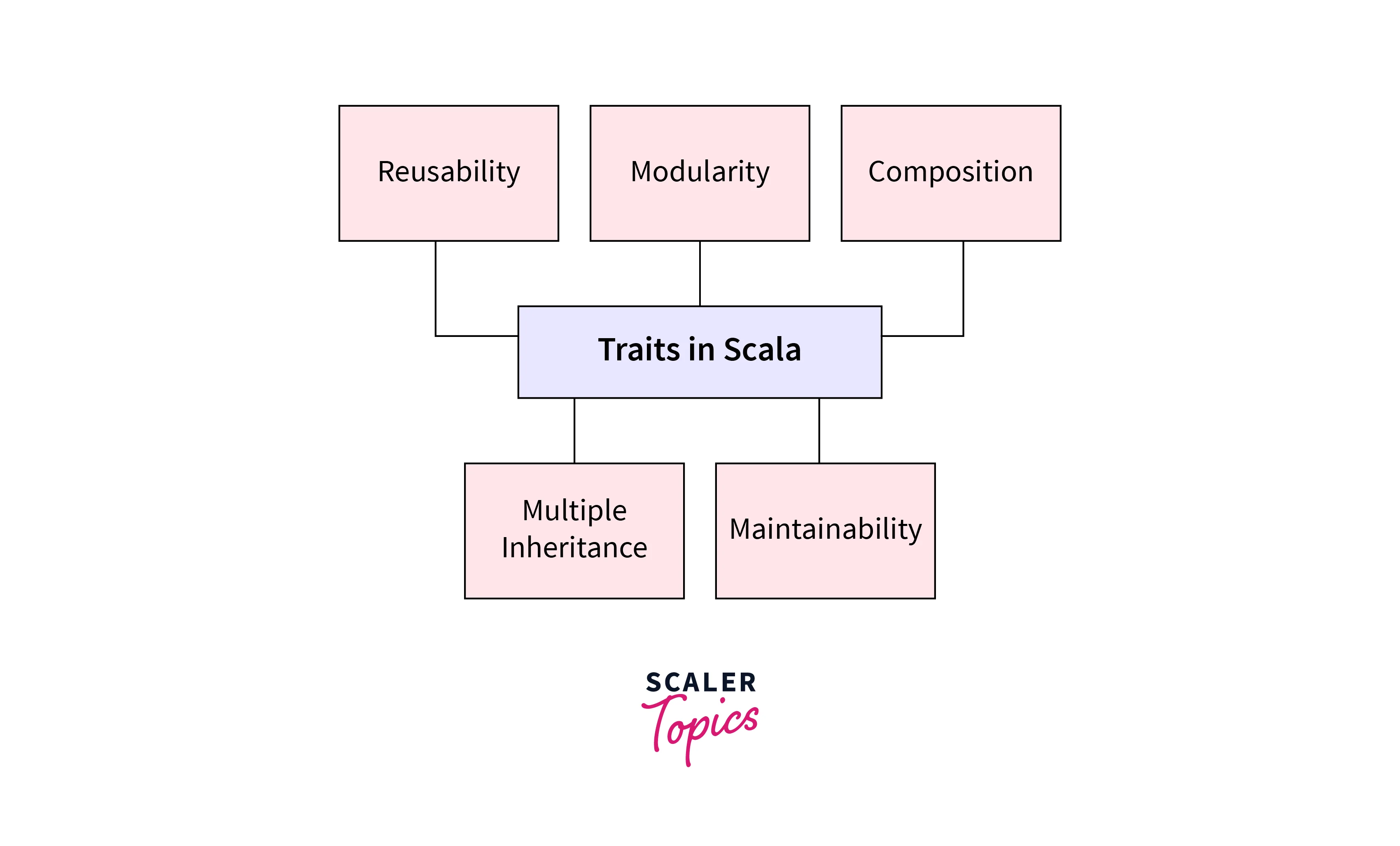Scala Traits
Overview
Traits in Scala is a fundamental feature that enhances code reusability, composition, and modularity. Traits are defined using the trait keyword, followed by the trait’s name and its body, which contains the methods and fields.
Introduction
Scala is a versatile and expressive programming language, and it offers a unique feature called traits. Traits in Scala provide a mechanism for code reuse and composition, allowing us to define reusable components encapsulating methods and fields. Traits cannot be instantiated on their own but are intended to be mixed into classes. Traits allow classes to inherit the behavior defined by those traits, facilitating flexible code organization. They offer a powerful tool for creating complex class hierarchies by stacking traits on top of each other. Thus, understanding traits is essential for writing modular, reusable, and maintainable code.
Scala Trait Syntax
To define a trait in Scala, the keyword trait is used, followed by the trait's name and its body enclosed in curly braces. The body can contain method definitions, field declarations, and concrete implementations.
Syntax:

Using Traits
Traits in scala are used to encapsulate methods and fields which can be reused in different classes. Traits can declare concrete methods, abstract methods, and fields.

Let's have a look at how the traits are used in Scala with the help of an example.
Example:
Let's consider an example where we have defined a trait called Greeting that defines a method for greeting someone:
The Greeting trait has a single method called greet, which takes a name parameter and prints a greeting message. The method has a default implementation that prints "Hey, {name}!".
Now, let's create a class Person that extends the Greeting trait:
In the Person class, we extend the Greeting trait using the extends keyword. This allows the Person class to inherit the greet method from the Greeting trait.
Finally, let's create an instance of the Person class and invoke the introduce method:
This demonstrates how the Person instance used the greet method provided by the Greeting trait through inheritance. The introduce method calls the greet method, resulting in the greeting message "Hey, Virat!" being printed on the console.
Subtyping
Subtyping in scala refers to the ability to treat instances of a class that extends a trait as instances of both the class and the trait. This means that a class that extends a trait can be used wherever the trait is expected.
When a class extends a trait, it gains the trait's behavior and becomes a subtype of both the class and the trait. This allows the class to be used in places where the trait is expected, enabling code reuse and promoting polymorphism.
Advantages and Disadvantages of Traits in Scala
Advantages of Traits in Scala
| Basis | Advantages |
|---|---|
| Code Reusability | Traits provide a powerful mechanism for code reuse. They allow us to define reusable components that can be mixed into multiple classes. |
| Composition | Traits support composition which enables us to combine multiple traits to create complex behaviors. |
| Multiple Inheritance | Unlike classes, which only support single inheritance. Scala allows classes to mix in multiple traits, providing multiple inheritance. |
| Interface and Implementation | Traits in Scala can define both abstract methods (like an interface) and concrete method implementations. This makes traits more powerful than traditional interfaces. |
| Solving Diamond Inheritance Problem | Trait linearization resolves the diamond inheritance problem that can occur in multiple inheritance scenarios. |

Disadvantages of Traits in Scala
| Basis | Disadvantages |
|---|---|
| Code Complexity | As traits allow for composition and the mixing of multiple traits, the resulting class hierarchy can become complex and harder to understand. |
| Diamond Inheritance Ambiguity | While trait linearization solves the diamond inheritance problem, it can still result in ambiguity if two or more traits have conflicting implementations of the same method. |
| Limited Constructor Parameters | Traits in Scala cannot have constructor parameters, which may limit their flexibility in certain scenarios where parameterized behavior is required during trait instantiation. |
| Method Name Clashes | Mixing in multiple traits can introduce method name clashes if two or more traits contain methods with the same name and signature. |
Example to Demonstrate the Use Of Traits in Scala
Let's see an example code in Scala that demonstrates the use of traits in Scala.
Output:
In this example, we have a trait called Animal that defines a method speak(). The Dog and Cat classes extend the Animal trait and provide their implementations of the speak() method. We then created objects of both the Dog and Cat classes and called the speak() method with both objects. Despite calling the same function for both, they gave different outputs according to their definition of the speak() in their respective classes.
This shows how the traits in scala can be used to share a common behavior with different classes and classes can have their own definitions of that behavior. Similarly, traits can be used to extend methods as well as fields to different classes.
Value Classes and Universal Traits
Value Classes
Value classes in Scala are a way to create lightweight wrapper types that provide type safety and performance improvements. They allow us to define new types with minimal runtime overhead, as they are optimized to be represented as their underlying primitive types at runtime.
To define a value class, we use the class keyword and extend the AnyVal marker-trait. The primary constructor of a value class must have a single and non-abstract parameter. Value classes have only one public, non-implicit method.
Example:
In this example, the Meter class is defined as a value class. It wraps a Double value and provides methods for addition and subtraction. The Meter class is treated as a value type at runtime, with minimal memory and runtime overhead.
Universal Traits
Universal traits in Scala are traits that can be mixed into any type, including both reference types and value types. They provide a way to define common behaviors or add functionality to existing types without modifying their original definitions.
Unlike regular traits, which can only be mixed into classes, universal traits can be mixed into any type that satisfies their requirements. This includes classes, objects, value classes, and even built-in types like Int or String.
Universal traits are defined just like normal traits using the trait keyword.
Example:
In this example, the Printable trait defines a single method print(). Any type that extends this trait is required to implement the print() method. This trait can be mixed into classes, objects, or even value classes, allowing them to provide a custom implementation of the print() method.
When to Use Traits?
Traits in Scala is a versatile feature that can be used in various scenarios to enhance code organization, code reusability, and modularity.
Here are some situations where using traits is beneficial:
-
Code Reuse:
Traits are an excellent choice when you have common behaviors or functionalities that need to be shared across multiple classes.
-
Composition:
Multiple traits can be combined to create complex behaviors. When we need to create classes with different combinations of functionalities, traits can be mixed in as needed, providing a flexible and modular approach.
-
Interfaces with Default Implementations:
Traits can act as interfaces in Scala, defining a set of methods that a class must implement.
-
Modular UI Components:
Traits can be particularly useful when developing user interface components. We can define traits for common UI functionalities, such as event handling or rendering, and mix them into different UI components.
-
Enforcing Constraints:
Traits can be used to enforce certain constraints on classes that mix them in. For example, we can define a trait that requires implementing classes to adhere to specific naming conventions or to implement specific methods with specific signatures.
Conclusion
- Traits in Scala provide a mechanism for code reuse and composition by encapsulating methods and fields that can be mixed into classes.
- Traits are defined using the trait keyword, followed by the trait's name and its body, which contains the methods and fields.
- Classes can gain the traits' behavior and becomes a subtype of both the class and the trait by extending the traits using the extends keyword.
- Traits in Scala provide features like Value Classes to define new types with minimal runtime overhead and Universal Traits to define common behaviors or add functionality to existing types without modifying their original definitions.
- Traits empower us with various advantages to create modular, reusable, and maintainable code.
